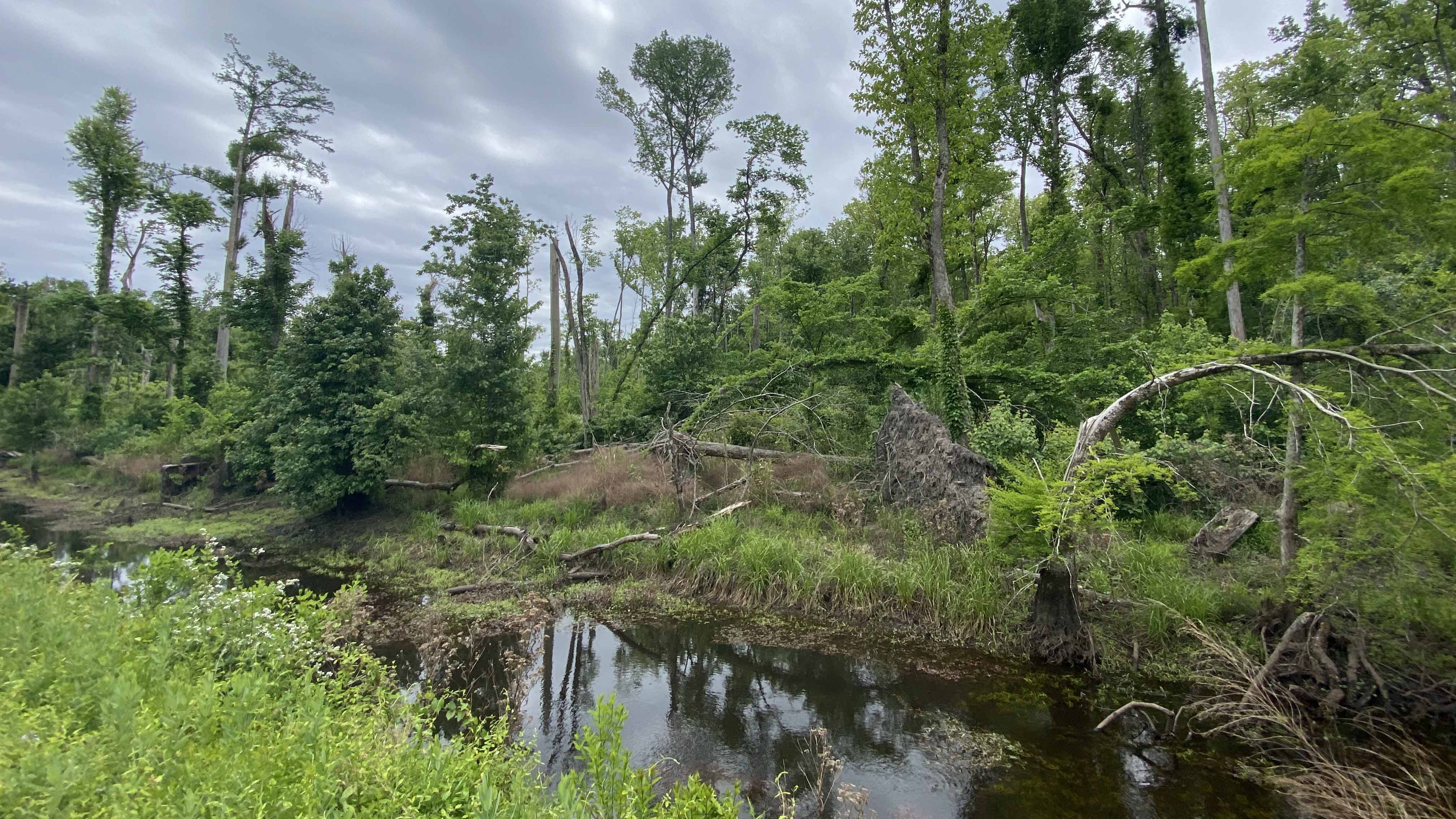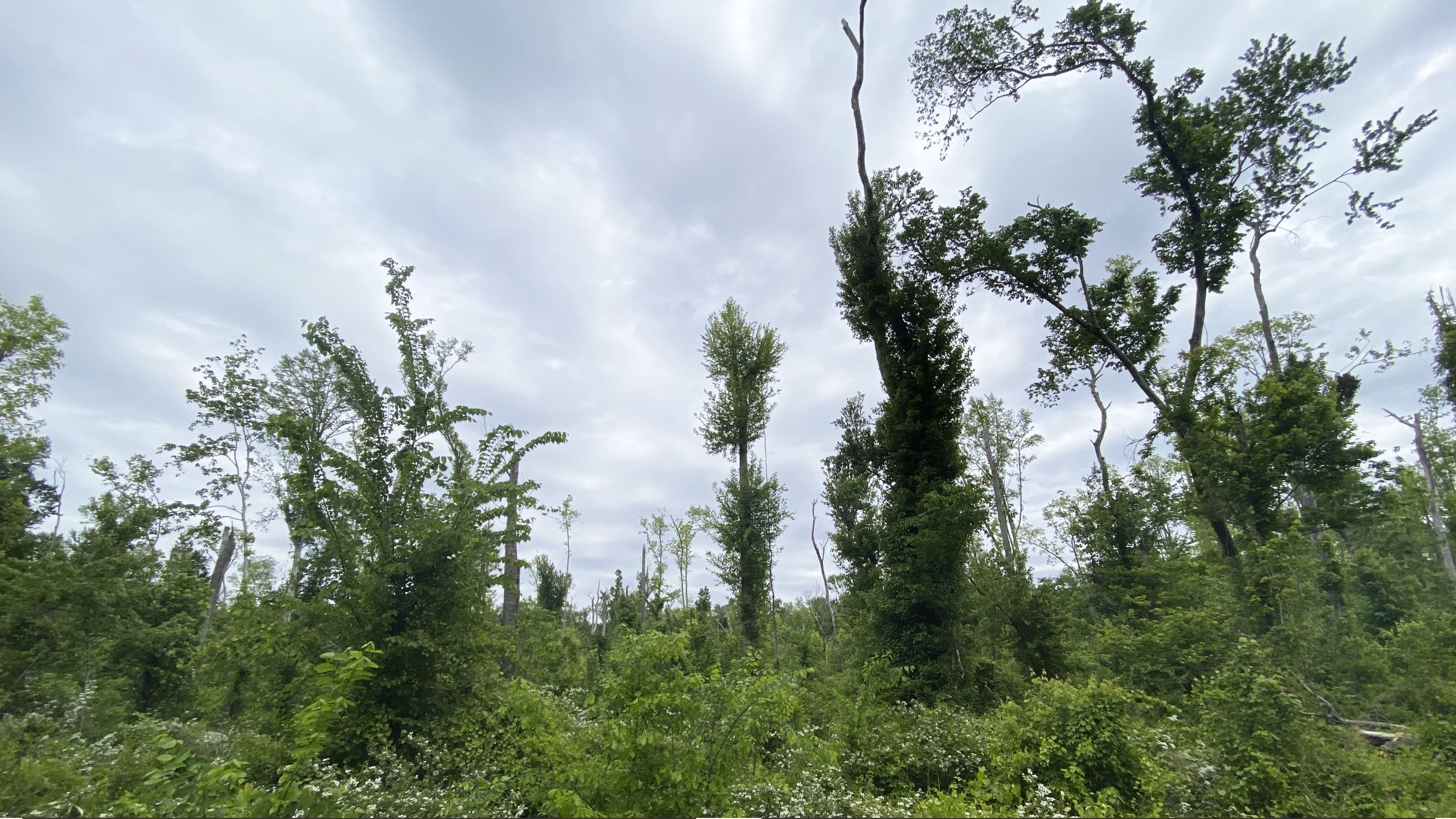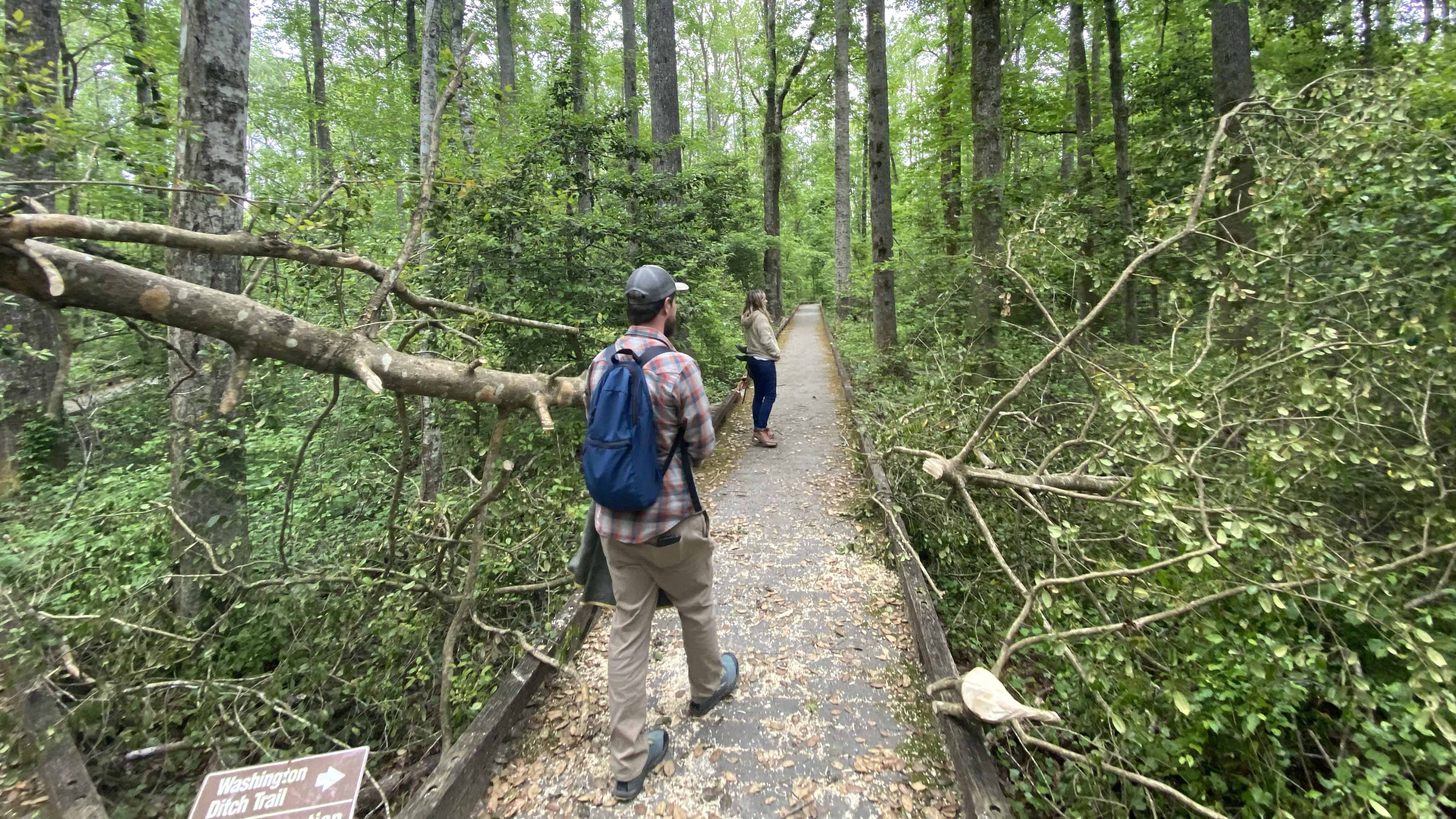
Taylor Sloey and Erik Yando first arrived at the western side of the Great Dismal Swamp National Wildlife Refuge two years ago as volunteers.
They were there to help boost the environment by planting Atlantic white cedar trees. But they soon stumbled across something much more interesting: a massive swath of the swamp damaged by a storm.
“Every single tree in this area was snapped like a toothpick,” Yando said. “There was no tree left unscathed. All the leaves were just completely blown off.”
The scarred landscape was caused by a tornado. It had blown through more than a year earlier, during Hurricane Isaias in 2020.
The storm cut through the swamp with 100 mph winds along its path from North Carolina to downtown Suffolk, where it also caused damage to several homes and businesses.
Yando and Sloey, who are married, are both ecologists and assistant professors at Old Dominion University.
Sloey said the situation was “an amazing natural experiment.”
“You could never get funding or approval to go knock down 400 acres of a forest and see what comes back naturally,” Sloey said.
The pair are now leading a project to study how the swamp recovers from major storm damage.
Their findings could offer a glimpse into the future of one of the region’s most unique ecosystems in the face of climate change, as warming temperatures are expected to produce more severe storms.
They call it “Swampnado.”
—

A section of the Great Dismal Swamp affected by the 2020 tornado.
On a cool morning this spring, Sloey and Yando trekked through part of the Great Dismal Swamp’s Washington Ditch Trail.
A few trees lay on their side or were missing branches along the forested trail.
But as the couple approached the research site, the tree canopy suddenly disappeared, revealing a large clearing covered in scraggly undergrowth.
“One of the first really remarkable things to notice is how the understory starts to change,” Sloey said. “You get more of this shrubby groundcover stuff coming in.”
One of the researchers’ biggest questions is: which species will return after the disaster?
Some types of trees that were wiped out might not come back – allowing others to take over.
That process can lead to a phenomenon called habitat homogenization. Sloey said it’s happening in forested wetlands across the country.
“A few species that are really good competitors, they are invasive and they take over,” Sloey said. “And the overall species diversity goes way down.”
Species diversity is crucial to a healthy ecosystem. Different species rely on each other and interact in important and often unseen ways.
Trees in the Dismal Swamp include cypress, sweetgum, water tupelo and different types of oaks.
Red maple is one of the biggest bully species along the East Coast, including in the swamp. They’re highly susceptible to fire, but the species has taken advantage of the absence of natural forest fires, which are now often suppressed by humans.
Already the maples appear to be creeping into the tornado scar, Sloey said.
“That’s a bad omen that the Dismal Swamp is falling victim to that homogenization.”
Red maples are a native species, not invasive. But they’ve become more common in the swamp as environmental conditions changed over time, said Susan Stanley, a biologist with the Great Dismal Swamp National Wildlife Refuge.
“After centuries of logging and ditching the roads, the swamp is dried out somewhat and the species composition has shifted,” Stanley said.
She hopes findings from the Swampnado project can help inform how to manage the swamp going forward. Refuge managers could, for instance, cut down some red maples to allow other species room to grow.
Stanley said she’s also interested in the ODU team’s methodology – a multi-pronged approach using satellites and on-the-ground monitoring that could eventually aid refuge officials who currently rely on labor-intensive physical observations.
Yando and Sloey started the work by taking detailed measurements around the site and some control plots.
They looked at what species of greenery were there, the damage around them and what vegetation was growing beneath.
The fieldwork — battling heat and insects last summer — wasn’t easy. Moving 10 feet sometimes took as many minutes. The pair had to bring out a kayak to cross ditches.
But some areas are even more inaccessible and unrealistic to monitor regularly.
So they teamed up with geospatial analysts at ODU, including professors Tom Allen and George McLeod.
The group has used publicly available imagery from federal Landsat satellites to gather data on things like tree cover.

A section of the Great Dismal Swamp affected by the 2020 tornado.
The Dismal Swamp is the last vestige of a swamp that once covered more than a million acres, including almost all of Hampton Roads and stretching south to North Carolina’s Albemarle Sound. It still provides some of the most important wildlife habitat in the mid-Atlantic.
“A place like the Dismal Swamp is just this super unique gem of a place,” Yando said. “You look up and down the Eastern Seaboard and the Dismal Swamp is this little patch of green that's almost like no other.”
Climate change could now threaten it.
In Hampton Roads, the focus is often on the threat from sea level rise, Yando said. But the region faces other potential climate impacts.
The science around tornadoes is complicated, and researchers haven’t yet definitively linked an increase in the twisters to climate change.
But warming temperatures in the air and water can spawn more intense storms – like the one that sent the tornado through the Dismal Swamp.
A recent tornado generated by a routine thunderstorm caused millions of dollars in damage to a Virginia Beach neighborhood.
Yando and Sloey hope to shed light on how the area might endure such threats.
Their research is also exploring the potential increase in wildfire risk after storms knock over trees and branches, leaving behind piles of dead wood.
More frequent extreme heat tied to climate change also poses a threat to the delicate ecosystem, Sloey said.
People often focus on storm damage only when it touches human infrastructure, Yando said.“But these phenomena that are occurring out in an area that most people aren't really going into also have this really massive impact.”
He and Sloey hope to continue monitoring the tornado-blown patch for years.
Already it’s starting to spring back to life.
On a recent trip to the storm scar, briars and blackberry shrubs covered the ground and trees sprouted upward in different stages of growth, defying the disaster.




